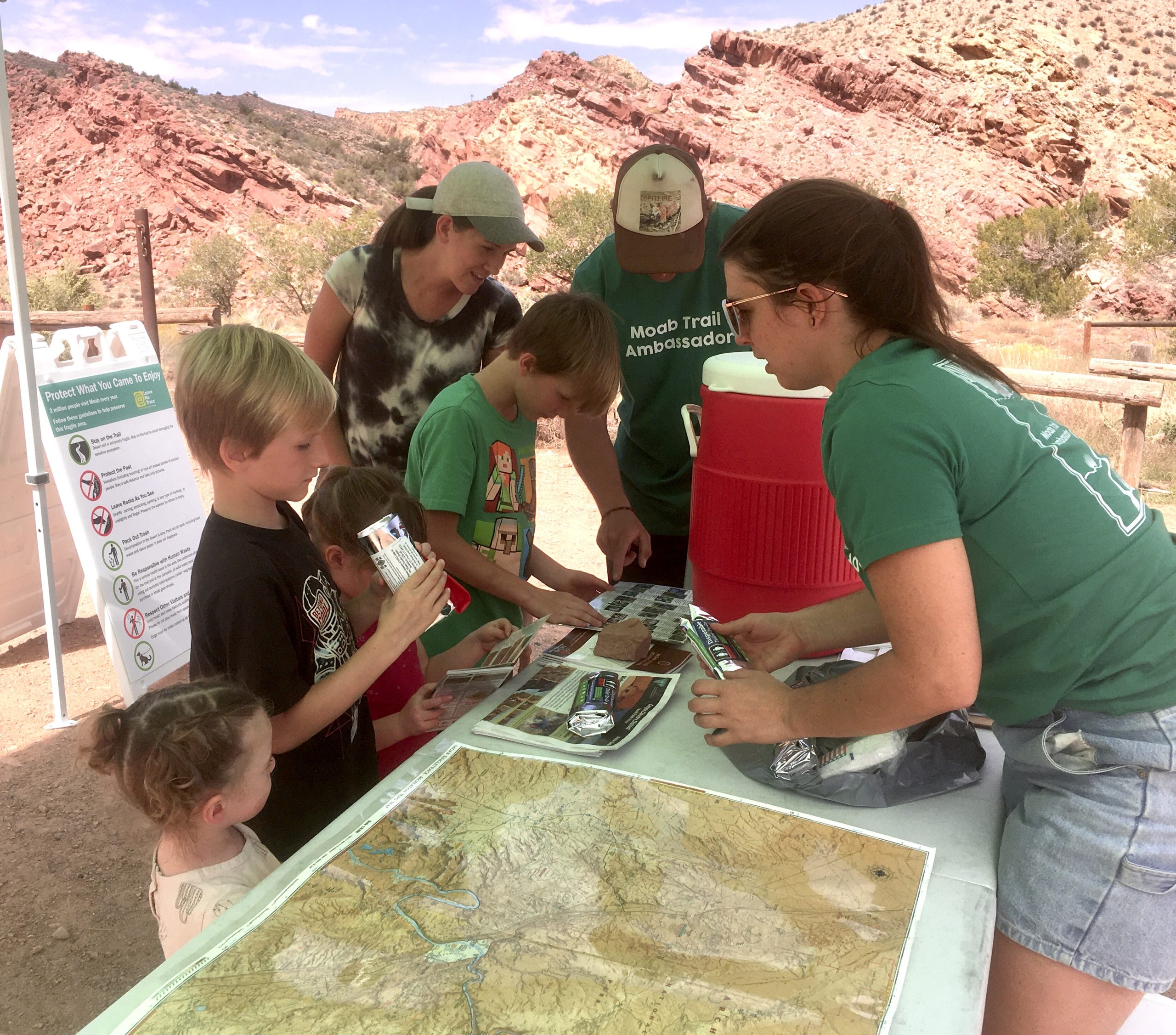Some information may be outdated.
“I’ve never met someone with a job like mine,” said Mariah Ward, Grand County’s Healthy Trails Coordinator.
Ward works full-time to address a problem specific to our area’s extremely high visitation and desert climate: human waste management. At this week’s Grand County Commission meeting, her position was funded as a collaboration between the Southeast Utah Health Department and Grand County Active Transportation & Trails department.
“I’m happy to see this position out there,” said Commission Chair Jacques Hadler. “It’s definitely an issue and it’s nice to have somebody working on it and someone responsible [for it].”
The problem of human waste might feel a little distasteful, but officials say that it’s a real health hazard and harms popular recreation areas. In recent years, extreme issues with human waste in dispersed camping areas like Dalton Wells and Willow Springs prompted state and local officials to approve official campsites with vault toilets as part of the future Utahraptor State Park.
Locally, issues with human waste getting into the normal garbage stream became so bad for workers with the Canyonlands Solid Waste Authority that last year a multi-agency pilot project was formed to try to keep human fecal matter from unexpectedly flying at them from bursting wag bags.
In a pilot program last summer, five sites in Grand County and the City of Moab had designated public Wag Bag Disposal cans. Wag bags are pre-made wrappers that can be used as portable toilets in remote areas, sealed, and packed out to avoid impacting the sensitive desert environment. These bags are commonly available from backcountry outfitters, visitor centers at national parks, and are distributed to visitors by Grand County Active Transportation & Trails Ambassadors.
Ward commented that wag bags and waste issues were also common in alpine recreational areas in Colorado and other high-altitude states.
Ward said that last year’s disposal program was a success, with 781 wag bags collected from around town, kept out of garbage trucks and disposed of safely, according to data from the Waste Authority. The locations for the containers include either side of the intersection of Highways 191 and 128 at Lions Park and the Grand County Transit Hub, the Canyonlands Solid Waste Authority Transfer Station (2295 S. Highway 191), the Southeast Utah Health Department (575 Kane Creek), and the Wastewater Reclamation Facility (1070 W. 400 North).
“The data collected has not been separated out by location, but the Transit Hub has had the most bags,” Ward told the Moab Sun News.
Ward is currently connecting with other organizations to get a complete picture of how and why human waste remains a challenge in our area, as well as working on other public education programs to make sure that Grand County’s trails remain hygienic, safe and scenic.
“This job is great,” said Ward. “The Trail Ambassador program—I don’t know of any other program like it anywhere.”
At the commission meeting that approved the funding for the position, officials praised the position as a successful collaboration between organizations. The Southeast Utah Health Department is funding 50% of the costs of the Healthy Trails Coordinator.
“I actually want to thank the Southeast Utah Health Department for putting the money up and recognizing the issue and being a part of the solution,” said Hadler. “I think it’s awesome and very much appreciated.”
“I’m always excited when organizations come together when they see a problem and coordinate to come up with a solution where both parties contribute,” Commissioner Mary McGann agreed.
Appreciate the coverage? Help keep local news alive.
Chip in to support the Moab Sun News.





